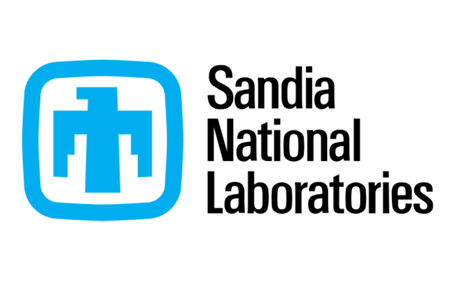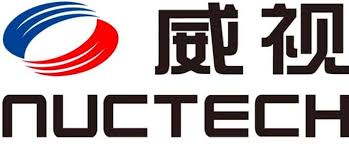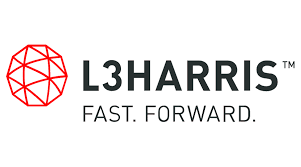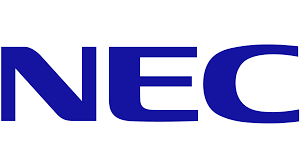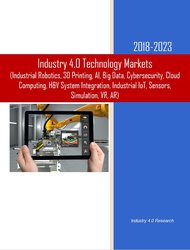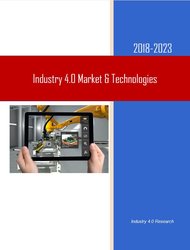Description
The United States, the world’s second largest manufacturer, with a 2017 industrial output reaching a record level of approximately $2.2 trillion, will apply Industry 4.0 technologies to replace China as the world’s largest manufacturer. The “Industry 4.0 Market & Technologies. Focus on the U.S. 2018-2023” report forecasts that the U.S. Industry 4.0 2016-2023 market will grow at a CAGR of 12.9%.
Why Buy This Report?
- No Risk. We Provide a Money-Back Guarantee* – With our money-back guarantee, we make it easy for you to find out for yourself how valuable this report is for your business an unprecedented offer in the market research industry.
- This report, based on thousands of sources, is the most detailed and comprehensive research of the U.S. Industry 4.0 market available today. The report’s research team:
- Reviewed over 600 Industry 4.0 reports, papers, vendors and governmental information sources
- participated in 31 round table Industry 4.0 focus groups
- conducted 75 face-to-face interviews with industry executives
- conducted a meta-research including more than 4000 industry executives from more than 2,700 companies in 29 countries
- The report analyzes each dollar spent in U.S. Industry 4.0 market via 3 bottom-up research vectors, thus providing a must-have report for all decision-makers in the Industry 4.0 market.
- At the last phase of the research (Q4 2017), our analysts conducted a series of 76 face-to- face interviews with multi-billion manufacturing executives.
The United States is the world’s second largest manufacturer, with a 2017 industrial output reaching a record level of approximately $2.2 trillion. The U.S. manufacturing industry employed 12.4 million people in March 2017. Manufacturing output has been growing more slowly in the United States than in China, South Korea, Germany, and Mexico, but more rapidly than in most European countries and Canada.
China displaced the United States as the largest manufacturing country in 2010.
U.S. manufacturers spend far more on R&D than those in any other country, but manufacturers’ R&D spending is rising more rapidly in several other countries. Manufacturers spend approximately 11% of value added on R&D an increase of more than 3% since 2002. A large proportion of U.S. manufacturers’ R&D takes place in high technology sectors, such as pharmaceutical, electronics and aircraft manufacturing, whereas in most other countries the largest share of R&D occurs in medium-technology sectors such as automotive, and machinery manufacturing.
Restoring manufacturing jobs to the United States struggling Rust Belt communities and corporate tax cuts were two of President Donald Trump’s biggest campaign promises. It is expected that Trump’s administration will follow Obama’s (2011) Industry 4.0 policy, the formation of the Advanced Manufacturing Partnership (AMP), a national effort bringing together industry and the Federal Government to invest in Industry 4.0 technologies.
The Federal Government and the private sector invest in Industry 4.0 to increase the American industrial base which has been taken over by China and low labor cost countries in Mexico, Brazil and Asia-Pacific. During Trump administration’s first year, American factories are adding jobs at the fastest pace since 2014.
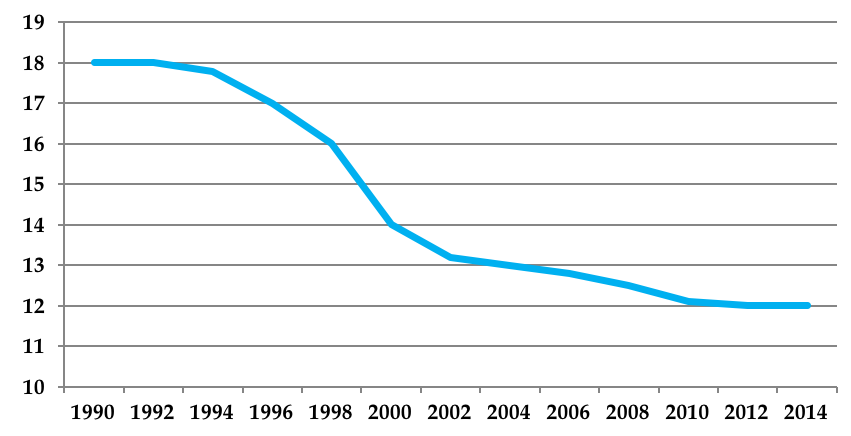
Figure 1 – U.S. Manufacturing Sector Share [%] of GDP
Since 2002, large-scale transfers of production to other parts of the world have resulted in a sharp increase in the U.S. dependency on imports. The number of people employed in the industry fell by 33% between 2002 and 2015. However, there have been some signs of a gradual recovery since 2010 with rises in both domestic and export demand. The U.S. media has been quick to seize on terms such as re-shoring and insourcing boom to describe what it already perceives as a fundamental change.

Figure 2 – U.S. Manufacturing Employment 2000-2017
Every dollar earned in the U.S. manufacturing contributes $1.4 to the economy; and approximately 2 jobs are created in other fields for every manufacturing job. Therefore, efforts to reinvent U.S. manufacturing by leveraging Industry 4.0 technologies to create smart factories will have a substantial impact on U.S. economic growth.
The Industry 4.0 wave of cyber-physical manufacturing is done with intelligent machines and industrial IoT linked supply chains, which are forcing all industries to convert their Industry 2.0 – 3.0 businesses into Industry 4.0 infrastructure.
According to a HSRC meta research***, 63% of the respondents to HSRC, BCG, PwC, The Economist Intelligence Unit, Roland Berger, Rittal and Siemens (including 4000 industry responds) state that their business future depends on Industry 4.0 transformation. Manufacturing executives from all industries have squarely identified and, in most cases, begun addressing the need for industrial transformation. Those respondents that have implemented Industry 4.0 conversion have already seen improvements and expect more progress soon.
The global Industry 4.0 market race is led by U.S. tech giants (see Figure 4), which have invested billions of dollars in Industry 4.0 core technologies, products R&D, M&A, commercialization & internal use. The transformation of the economy, being brought about by Industry 4.0, means that business processes such as supply, manufacturing, maintenance, delivery and customer service will all be connected via the Industrial IoT systems. These extremely flexible value networks will require new forms of collaboration between companies, both nationally and globally.

Figure 3 – Leading American and foreign Industry 4.0 Corporations
The Industry 4.0 transformation will change long-held dynamics in commerce and global economic balance of power.
In the next decades, American businesses will establish global networks that incorporate their machinery, warehousing systems and production facilities in the shape of cyber-physical systems. In the manufacturing environment, these cyber-physical systems comprise smart machines, storage systems and production facilities capable of autonomously exchanging information, triggering actions and controlling each other independently. These changes add to the traditional business pressure on manufacturers, but also offer unprecedented opportunities to optimize production processes.
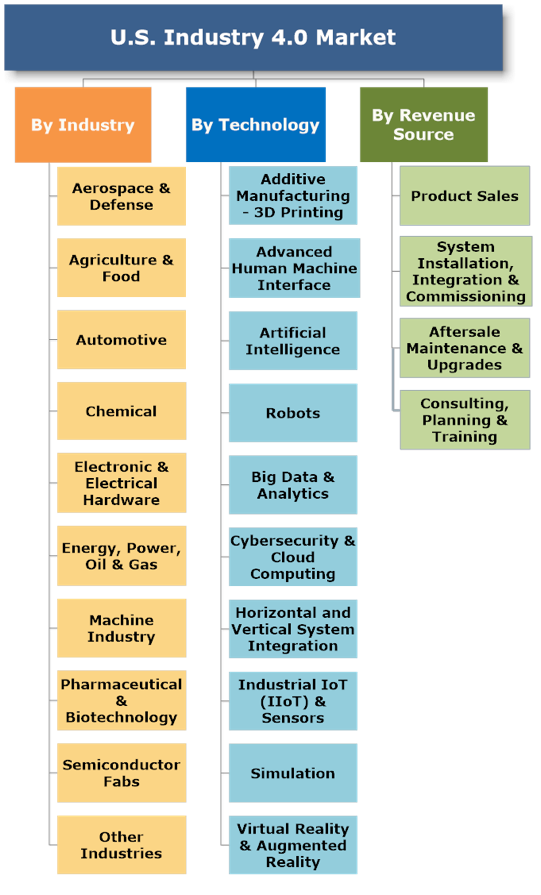
Figure 4 U.S. Industry 4.0 Market Granulation Vectors
Industry 4.0 holds immense potential for the American economy. Smart factories allow individual customer requirements to be met, meaning that even one-off items can be manufactured profitably. In Industry 4.0, dynamic business and engineering processes enable last-minute changes to production and deliver the ability to respond flexibly to disruptions and failures on behalf of suppliers.
This facilitates fundamental improvements in the industrial processes involved in manufacturing, engineering, material purchasing & usage, supply chain and life cycle management, predictive maintenance and real-time management overview. The smart factories that have already appeared across most industries employ a completely novel approach to production. Smart products are uniquely identifiable, they can be located at all times, know their own history, current status and alternative routes to achieving their target state. The embedded manufacturing systems are vertically networked with business processes within factories and enterprises and horizontally connected to dispersed value networks that can be managed in real time from the moment an order is placed right through to outbound logistics. In addition, they both enable and require end-to-end engineering across the entire value chain
End-to-end transparency is provided over the manufacturing process, facilitating optimized decision-making. Industry 4.0 will also result in new ways of creating value and novel business models. It will provide start-ups and SMEs with the opportunity to develop and provide downstream services.
The Industry 4.0 competition is not only about technology or offering the best products, but also, about the companies that gather appropriate data and combine them to offer premium digital services. Those who know what the customer wants, and can forecast consumer demand, will provide the information to develop an unfair competitive advantage.
The major winners might be those that control Industry 4.0 Platforms , software layers that syndicate various devices, information and services, on top of which other firms can build their own offerings.
The transformation of the economy being brought about by Industry 4.0 means that business processes such as supply, manufacturing, maintenance, delivery and customer service will all be connected via the Industrial IoT systems. These extremely flexible value networks will require new forms of collaboration between companies, both nationally and globally.
The market will undergo a major transformation in 2018-2023 through the following drivers:
- The U.S.-China competition in the manufacturing sector is becoming fiercer and fiercer
- The United States, the world’s second largest manufacturer, with a 2017 industrial output reaching a record level of approximately $2.2 trillion, will apply Industry 4.0 technologies to replace China as the world’s largest manufacturer.
- The U.S. Federal Government manufacturing industries invest in Industry 4.0 to increase the American industrial base taken over by China, Mexico, EU and emerging economies Federal funded Industry 4.0 projects, R&D, subsidies, tax incentives and the December 2017 tax reform act
- Unprecedented opportunities to optimize production processes
- Industry 4.0 offers American start-ups and SMEs the opportunity to develop and provide downstream services
- Industry 4.0 dynamic business and engineering processes enable last-minute changes to production and deliver the ability to respond flexibly to disruptions and failures on behalf of suppliers and customers
- Industry 4.0 provides the link to the consumer, and can forecast consumer demand
The “Industry 4.0 Market & Technologies. Focus on the U.S. – 2018-2023” report is the most comprehensive review of this emerging market available today. It provides a detailed and reasoned roadmap of this rapidly growing market.
The report is aimed at:
- Industry 4.0 Products Vendors
- Industry 4.0 Systems Integrators
- Government Industry Agencies
- Manufacturing Companies, SME included
The report has been explicitly customized for the industry and government decision-makers to enable them to identify business opportunities, emerging technologies, market trends and risks, as well as to benchmark business plans.
Questions answered in this 425-page market report include:
- What was the 14 submarkets size and what were the trends during 2016 & 2017?
- What is the 2018-2023 forecast for those submarkets?
- Which industries and technologies provide attractive business opportunities?
- What drives the Industry 4.0 managers to purchase solutions and services?
- What are the technology & services trends?
- What are the market SWOT (Strengths, Weaknesses, Opportunities and Threats)?
With 425 pages, 58 tables and 96 figures, this 3-volume report covers 10 industries, 10 leading technologies and 4 revenue sources, offering for each of them 2016-2017 estimates and 2018-2023 forecasts and analyses.
Why Buy This Report?
A. This is the most comprehensive information source of the global Industry 4.0 market and technologies available today.
B. Market data is analyzed via 4 key perspectives:
With a highly fragmented Industry 4.0 market we address the money trail via the following 3 bottom-up market size vectors:
- Aerospace I4.0
- Defense I4.0
- Agriculture I4.0
- Food I4.0
- Automotive I4.0
- Chemical I4.0
- Electronic Hardware I4.0
- Electrical Hardware I4.0
|
- Energy, Power I4.0
- Oil & Gas I4.0
- Machine Industry I4.0
- Pharmaceutical I4.0
- Biotechnology I4.0
- Semiconductors I4.0
- Other I4.0 Industries
|
- By Industry 4.0 Technologies:
- Additive Manufacturing- 3D Printing
- Advanced Human Machine Interface
- Artificial Intelligence
- Industrial Robots
- Big Data & Analytics
- Cybersecurity & Cloud Computing
|
- Horizontal and Vertical System Integration
- Industrial IoT (IIoT)
- Sensors
- Simulation
- Virtual Reality & Augmented Reality
- Predictive Maintenance
|
- By 4 Revenue Sources:
- Product Sales
- System Installation, Integration & Commissioning
- Aftersale Maintenance, Upgrades & Spare Parts
- Consulting, Planning & Training
C. Detailed market analysis framework is provided:
- Market drivers & inhibitors
- Business opportunities
- SWOT analysis
- Barriers to new entry, supplier power, buyer power and competitive rivalry
- Business environment
- The 2016-2023 market segmented by 188 submarkets
- More than 1000 references and links to Industry 4.0 data sources & publications
D. The report includes the following appendices:
- Appendix A: Industry 4.0 Smart Maintenance
- Appendix B: How to Convert an Industry 2.0 or Industry 3.0 Business to Industry 4.0
- Appendix C: Abbreviations
- Appendix D: Terminology
- Appendix E: Research Sources & Bibliography
E. Industry 4.0 market report addresses 13 technologies:
- Additive Manufacturing- 3D Printing
- Advanced Human Machine Interface
- Artificial Intelligence
- Industrial Robots
- Big Data & Analytics
- Cybersecurity
- Cloud Computing
- Horizontal and Vertical System Integration
- Industrial IoT (IIoT)
- Sensors
- Simulation
- Virtual Reality
- Augmented Reality
F. The report presents extensive information on 49 leading companies (including companies profile, Industry 4.0 activities & products, and recent events), namely:
3D Systems
ABB Ltd.
Advantech
Aibrain
Alphabet
Arcadia Data
Arm Ltd.
Beijer Electronics
Bosch
Cisco
CyberX
Dassault Syst?mes
DENSO
EOS
ExOne
General Electric
Honeywell |
Hewlett Packard
Huawei
IBM
Intel
Intelligent Automation
Interset Software
Kuka
Magic Leap
Microsoft
Mitsubishi Electric
NEC
NGRAIN
Oculus VR
Oracle
QUALCOMM
Rethink Robotics
Rockwell Automation |
Samsung
SAP
Sensory
Siemens
SIGFOX
Splunk
Sri International
Stratasys
Texas Instruments
TRUMPF
u-blox
Wittenstein
Worldsensing SL
Xerafy
Xjet |
NOTES:
(*) Industry 4.0 Report “Money-Back Guarantee” Program: Terms & Conditions
- To qualify for the money-back guarantee program send an email with your contact information to: sales@homelandsecurityresearch.com
- HSRC will inform the customer of his/her eligibility for the program ASAP.
- Qualified customers are required to pay the full list price of the report, and a copy of the report will be dispatched to them ASAP.
- Customers wishing to implement the money-back-guarantee policy, must notify HSRC via e-mail (sales@homelandsecurityresearch.com), within 48 hours of receipt of the report that they request a refund. The customer will have to erase and destroy any copy of the report and inform sales@homelandsecurityresearch.com that it has been done.
- The customer has 48 hours of receipt of the report to fully comply with Clause (4).
- HSRC would appreciate receiving customer’s honest review of the report and the reason(s) it didn’t meet his/her needs/expectations.
- Upon receipt of the e-mail as detailed in Clause (4), HSRC will issue within 3 working days a refund instruction (minus $300 for shipping and handling).
- HSRC reserves the right to decide that a company doesn’t qualify for this promotion at HSRC’s own discretion
(**) “Market” Definition. Industry 4.0 turnkey systems sale, aftersales maintenance & upgrades and outsourced services such as consulting, planning & training
(***) The Meta-Research is based on the statistics of 11 Industry 4.0 surveys conducted by HSRC, BCG, PwC, Deloitte, Roland Berger, Rittal, Siemens and The Economist Intelligence Unit, totaling >4000 responders.
Table of Contents
Download TOC as PDF
3 Volumes:
Industry 4.0 Market & Technologies Focus on U.S – 2018-2023 – Volume 1
Industry 4.0 Market & Technologies Focus on U.S – 2018-2023 – Volume 2
Industry 4.0 Market & Technologies Focus on U.S – 2018-2023 – Volume 3
Industry 4.0 Market & Technologies Focus on U.S – 2018-2023 – Volume 1
| 1 |
Executive Summary |
| 1.1 |
Industry 4.0 Definition |
| 1.2 |
Fourth Industrial Revolution – Industry 4.0 Evolution |
| 1.3 |
Key Findings |
| 1.4 |
Key Market Drivers |
| 1.5 |
Industry 4.0 Key Challenges |
| 1.6 |
Major Conclusions |
| 1.7 |
Industry 4.0 Eco-System |
| 1.8 |
Industry 4.0 Client CEO Takeaway |
| 1.9 |
Recommendations for Industry 4.0 Vendors |
| 1.1 |
Industry 4.0 Market Research Vectors |
| 1.11 |
U.S. Industry 4.0 Market Size – 2016-2023 |
| 1.11.1 |
U.S. Industry 4.0 Market Size by Industry – 2016-2023 |
| 1.11.2 |
U.S. Industry 4.0 Market Size by Technology – 2016-2023 |
| 1.11.3 |
U.S. Industry 4.0 Market Size by Revenue Source -2016-2023 |
| 1.11.4 |
Industry 4.0 Market Size by Country – 2016-2023 |
| 2 |
Industry 4.0 Market Background |
| 2.1 |
Industry 4.0 Market: Introduction |
| 2.2 |
Industry 3.0 Factory Vs. Industry 4.0 Factory |
| 2.3 |
Industry 4.0 Ecosystem and Outlook |
| 2.4 |
Industry 4.0 Design Principles |
| 2.5 |
Industry 4.0 Technologies, Architecture and Supply Chain Intra-Relationship |
| 2.6 |
Manufacturers Industry 4.0 Introduction Strategies |
| 2.7 |
Cobots |
| 2.8 |
In-memory Computing |
| 2.9 |
Edge Computing |
| 2.1 |
Industry Cyber-Physical Systems (CPS) |
| 2.11 |
Industry 4.0 Mega Trends |
| 2.12 |
Predictive Maintenance 4.0 |
| 2.13 |
Smart Factories |
| 2.14 |
Society 4.0 |
| 2.15 |
Customized Manufacturing 4.0 |
| 2.16 |
Industry 4.0: Value Chain |
| 2.17 |
Logistics 4.0 & Smart Supply Chain 4.0 Management |
| 2.18 |
Value of Industry 4.0 Partnerships |
| 2.19 |
Industry 4.0 & Smart Manufacturing: Operational-Technology & Information Technology Convergence |
| 2.2 |
Industry 4.0 Lifecycle Management |
| 2.21 |
Industry 4.0 Vertical Integration |
| 2.22 |
Industry 4.0: Effects on the Private Sector |
| 2.23 |
Industry 4.0: Effects on Governments |
| 2.24 |
How to Introduce Industry 4.0: The Fourth Industrial Revolution Intelligence Concept (4IRI) |
| 2.25 |
Industry 4.0 Challenges |
| 2.26 |
Industry 4.0 Risks |
| 2.27 |
U.S. Industry 4.0 Market Background |
| 2.27.1 |
Manufacturing in the United States |
| 2.27.2 |
Smart Factory 2011-2015 |
| 2.27.3 |
U.S. Smart Factory 2011-2015 Projects |
| 2.27.3.1 |
Smart Manufacturing Projects |
| 2.27.3.2 |
U.S. Automotive Smart Manufacturing Projects |
| 2.27.3.3 |
Traditional Smart Manufacturing Projects |
| 2.27.3.4 |
Smart Service Projects |
| 2.27.4 |
United States Industry 4.0 Initiatives |
| 2.27.4.1 |
Overview |
| 2.27.4.2 |
The U.S. National Network for Manufacturing Innovation (NNMI) |
| 2.27.4.3 |
Other U.S. Industry 4.0 Market Initiatives |
| 2.27.5 |
Manufacturing Extension Partnership (MEP) |
| 3 |
Industry 4.0 Market Drivers |
| 4 |
Industry 4.0 Market Inhibitors |
| 5 |
Industry 4.0 SWOT Analysis |
| 5.1 |
Strengths |
| 5.2 |
Weaknesses |
| 5.3 |
Opportunities |
| 5.4 |
Threats |
| 6 |
Barriers to New Entry, Supplier Power, Buyer Power and Competitive Rivalry |
| 7 |
Business Opportunities |
| 7.1 |
Industrie 4.0 is Both Good and Bad News For Suppliers |
| 7.2 |
Industry 4.0 Business Opportunities |
| 7.2.1 |
Platforms |
| 7.2.2 |
Licensed IP: |
| 7.2.3 |
Pay-By-Use and Subscription Based Services: |
| |
|
| |
U.S. INDUSTRY 4.0 MARKET |
| 8 |
U.S. Industry 4.0 Market by Industry – 2016-2023 |
| 8.1 |
U.S. Industry 4.0 Market Size 2016-2023 |
| 8.2 |
U.S. Industry 4.0 Market Breakdown 2016-2023 |
| 9 |
Aerospace & Defense 4.0 Market – 2016-2023 |
| 9.1 |
Defense Industry 4.0 Market Background |
| 9.2 |
U.S. Defense Scenario |
| 9.3 |
Aerospace Industry 4.0 Market Background |
| 9.4 |
Aerospace & Defense Industry 4.0 Market Size 2016-2023 |
| 9.4.1 |
Industry 4.0 Aerospace & Defense Market Size 2016-2023 |
| 9.4.2 |
Aerospace & Defense Industry 4.0: Market Dynamics 2016-2023 |
| 9.4.3 |
Aerospace & Defense Industry 4.0: Market Breakdown 2016-2023 |
| 10 |
Agriculture & Food Industries 4.0 Market – 2016-2023 |
| 10.1 |
Agriculture 4.0 Market Background |
| 10.1.1 |
Introduction |
| 10.1.2 |
Agriculture 4.0 Scope |
| 10.1.3 |
Agriculture 4.0 Farm Machinery |
| 10.1.4 |
The Added Value for Customers & Farmers |
| 10.1.5 |
Agriculture 4.0 Conclusions |
| 10.2 |
U.S. Agriculture & Food Industry 4.0 Market 2016-2023 |
| 10.2.1 |
Industry 4.0 Agriculture & Food Market Size 2016-2023 |
| 10.2.2 |
Agriculture & Food Industry 4.0: Market Dynamics 2016-2023 |
| 10.2.3 |
Agriculture & Food Industry 4.0: Market Breakdown 2016-2023 |
| 11 |
Automotive Industry Market – 2016-2023 |
| 11.1 |
Industry 4.0 Automotive Industry Market Background |
| 11.2 |
Industry 4.0 on the Automotive Industry: Major Trends |
| 11.2.1 |
Automotive Industry Cloud Computing |
| 11.2.2 |
Automotive Industry Cybersecurity |
| 11.2.3 |
Automotive Industry Big Data Analytics |
| 11.2.4 |
Automotive Industry Internet of Cars |
| 11.2.5 |
Automotive Industry: Opportunities |
| 11.3 |
Automotive Industry 4.0 Market Drivers |
| 11.4 |
Automotive Industry 4.0 Market: Key Challenges |
| 11.5 |
Autonomous Cars 4.0 |
| 11.6 |
Automotive Industry 4.0: Internet of Things |
| 11.7 |
Automotive Industry 4.0: Machine-Learning |
| 11.8 |
Automotive Industry 4.0: Cloud-based Intelligence |
| 11.9 |
Customized Car Manufacturing 4.0 |
| 11.1 |
Automotive Industry 4.0 Example: BMW |
| 11.11 |
U.S. Automotive Industry 4.0 Market 2016-2023 |
| 11.11.1 |
Industry 4.0 Automotive Market Size 2016-2023 |
| 11.11.2 |
Automotive Industry 4.0: Market Dynamics 2016-2023 |
| 12 |
Chemical Industry 4.0 Market – 2016-2023 |
| 12.1 |
Chemical Industry 4.0 Market Background |
| 12.1.1 |
The U.S. Chemical Industry |
| 12.1.2 |
Chemical Industry 4.0 Market |
| 12.1.3 |
Industry 4.0 Transformations in the Chemical Industry |
| 12.2 |
U.S. Chemical Industry 4.0 Market 2016-2023 |
| 12.2.1 |
Industry 4.0 Chemical Market Size 2016-2023 |
| 12.2.2 |
Chemical Industry 4.0: Market Dynamics 2016-2023 |
| 13 |
Electronic & Electrical Hardware Industries 4.0 Market – 2016-2023 |
| 13.1 |
Electronic & Electrical Hardware: Industry 4.0 Market Background |
| 13.2 |
U.S. Electronic & Electrical Hardware Industry 4.0 Market 2016-2023 |
| 13.2.1 |
Industry 4.0 Electronic & Electrical Hardware Market Size 2016-2023 |
| 13.2.2 |
Electronic & Electrical Hardware Industry 4.0: Market Dynamics 2016-2023 |
| 14 |
Energy, Power, Oil & Gas 4.0 Market – 2016-2023 |
| 14.1 |
Industry 4.0 Energy, Power, Oil & Gas Market Background |
| 14.1.1 |
Energy, Power, Oil & Gas Industry Trends |
| 14.1.2 |
The Oil & Gas Industry |
| 14.1.3 |
Industry 4.0 Oil & Gas Sector Environmental Perspective |
| 14.1.4 |
Industry 4.0 Undersea Oil & Gas Challenge |
| 14.1.5 |
Oil & Gas Big Data |
| 14.1.6 |
Oil & Gas Industry 4.0 Outlook |
| 14.1.7 |
Industry 4.0 Energy and Power Market Background |
| 14.2 |
Industry 4.0 & Industrial IoT Energy Productivity |
| 14.2.1 |
Introduction |
| 14.2.2 |
Energy and Power Industry 4.0 Remote Monitoring |
| 14.2.3 |
Predictive Maintenance |
| 14.2.4 |
Energy and Power Industry 4.0 Advanced Control |
| 14.3 |
U.S. Energy, Power, Oil & Gas Industry 4.0 Market 2016-2023 |
| 14.3.1 |
Industry 4.0 Energy, Power, Oil & Gas Market Size 2016-2023 |
| 14.3.2 |
Energy, Power, Oil & Gas Industry 4.0: Market Dynamics 2016-2023 |
| 15 |
Machine Manufacturing 4.0 Market – 2016-2023 |
| 15.1 |
Machine Manufacturing Industry 4.0 Market Background |
| 15.1.1 |
The Machine Manufacturing Industry |
| 15.1.2 |
Machine Manufacturing Industry 4.0 Market |
| 15.2 |
U.S. Machine Manufacturing Industry 4.0 Market 2016-2023 |
| 15.2.1 |
Industry 4.0 Machine Market Size 2016-2023 |
| 15.2.2 |
Machine Industry 4.0: Market Dynamics 2016-2023 |
| 16 |
Pharmaceutical & Biotechnology 4.0 Market – 2016-2023 |
| 16.1 |
Pharmaceutical & Biotechnology Industry 4.0 Market Background |
| 16.2 |
U.S. Pharmaceutical & Biotechnology Industry 4.0 Market 2016-2023 |
| 16.2.1 |
Industry 4.0 Pharmaceutical & Biotechnology Market Size 2016-2023 |
| 16.2.2 |
Pharmaceutical & Biotechnology Industry 4.0: Market Dynamics 2016-2023 |
| 17 |
Semiconductors 4.0 Market – 2016-2023 |
| 17.1 |
Semiconductor Market Background |
| 17.1.1 |
Industry 4.0 Semiconductors |
| 17.1.2 |
Semiconductor Manufacturing Horizontal Integration |
| 17.1.3 |
Semiconductor Industry 4.0: Customization Considerations |
| 17.1.4 |
Industry 4.0 Semiconductor Manufacturing Market |
| 17.1.5 |
Conclusions |
| 17.2 |
U.S. Industry 4.0 Semiconductors Market 2016-2023 |
| 17.2.1 |
Industry 4.0 Semiconductors Market Size 2016-2023 |
| 17.2.2 |
Semiconductors Industry 4.0: Market Dynamics 2016-2023 |
| 18 |
U.S. Other Industry 4.0 Markets – 2016-2023 |
| 18.1 |
Other 4.0 Industry Markets Size 2016-2023 |
| 18.2 |
Other Industries 4.0: Market Dynamics 2016-2023 |
[Back to top]
Industry 4.0 Market & Technologies Focus on U.S – 2018-2023 – Volume 2
| |
TECHNOLOGY MARKETS |
| 1 |
Industry 4.0 Technology Markets |
| 1.1 |
Background |
| 1.2 |
The Forth Industrial Revolution Technologies |
| 1.3 |
Industry 4.0 Manufacturing Technologies |
| 1.4 |
Cyber Physical Infrastructure (CPS) |
| 1.5 |
Industry 4.0 Big Data and Cloud Computing |
| 1.6 |
Augmented Reality, Simulation & Visualization |
| 1.7 |
Industry 4.0 ICT |
| 1.7.1 |
Industry 4.0 Enterprise Resource Planning (ERP) |
| 1.7.2 |
ERP 4.0 |
| 1.7.3 |
Quality Management ERP 4.0 |
| 1.7.4 |
Supervisory Control and Data Acquisition (SCADA) |
| 1.8 |
On-Demand Industry 4.0 |
| 1.8.1 |
Programmable Logic Controller (PLC) |
| 1.8.2 |
Distributed Control System (DCS) |
| 1.8.3 |
Embedded ICT Conclusions |
| 1.9 |
Industry 4.0 Standardization Languages |
| 1.1 |
Visual Intelligence |
| 1.11 |
Industry 4.0 Technologies: Conclusions |
| 1.12 |
U.S. Consolidated Industry 4.0 Market, by Technology 2016-2023 |
| 2 |
Additive Manufacturing 3D Printing 4.0 Market – 2016-2023 |
| 2.1 |
Industry 4.0 Additive Manufacturing – 3D Printing Market Background |
| 2.1.1 |
Additive Manufacturing- 3D Printing: Introduction |
| 2.1.2 |
Additive Manufacturing – 3D Printing Technologies |
| 2.1.3 |
3D Printer: 27 Manufacturers |
| 2.1.4 |
Categories of Additive Materials |
| 2.2 |
U.S. Industry 4.0 Additive Manufacturing-3D Printing Market 2016-2023 |
| 2.2.1 |
Industry 4.0 Additive Manufacturing – 3D Printing Market Size 2016-2023 |
| 2.2.2 |
Additive Manufacturing – 3D Printing Industry 4.0 Market Dynamics 2016-2023 |
| 3 |
Advanced Human Machine Interface 4.0 Market – 2016-2023 |
| 3.1 |
Industry 4.0 Advanced Human Machine Interface Market Background |
| 3.2 |
U.S. Industry 4.0 Advanced Human Machine Interface Market 2016-2023 |
| 3.2.1 |
Industry 4.0 Advanced Human Machine Interface Market Size 2016-2023 |
| 3.2.2 |
Advanced Human Machine Interface Industry 4.0 Market Dynamics 2016-2023 |
| 4 |
Artificial Intelligence 4.0 Market – 2016-2023 |
| 4.1 |
Industry 4.0 Artificial Intelligence Market Background |
| 4.2 |
Industry 4.0 Artificial Intelligence |
| 4.2.1 |
Industry 4.0 AI Automated Planning and Scheduling |
| 4.2.2 |
Industry 4.0 AI Based Machine Learning |
| 4.2.3 |
Industry 4.0 AI in Robotics |
| 4.2.4 |
Artificial Neural Network and Connectionism |
| 4.2.5 |
Deep Learning |
| 4.2.6 |
Automotive AI |
| 4.2.7 |
The AI Partnership |
| 4.3 |
U.S. Industry 4.0 Artificial Intelligence Market 2016-2023 |
| 4.3.1 |
Industry 4.0 Artificial Intelligence Market Size 2016-2023 |
| 4.3.2 |
Artificial Intelligence Industry 4.0 Market Dynamics 2016-2023 |
| 5 |
Industrial Robots 4.0 Market – 2016-2023 |
| 5.1 |
Industry 4.0 Industrial Robots Market Background |
| 5.1.1 |
Industry 4.0 Industrial Robots |
| 5.1.2 |
Integration of Robots in Industry 4.0 |
| 5.1.3 |
Robots Role in Industry 4.0 |
| 5.1.4 |
4.0 Autonomous Robots Market: Conclusions |
| 5.1.5 |
Industry 4.0 Autonomous Robots Market Outlook |
| 5.2 |
Industrial Robots: Facts and Figures |
| 5.2.1 |
Industry 4.0 Delta Robots Market Background |
| 5.2.2 |
Industry 4.0 Parallel Robots Market Background |
| 5.2.3 |
Industry 4.0 Articulated Robots Market Background |
| 5.2.4 |
Industry 4.0 Cartesian & Gantry Robots Market Background |
| 5.2.5 |
Industry 4.0 SCARA Robots Market Background |
| 5.2.6 |
Industry 4.0 Collaborative Industry Robots Market Background |
| 5.2.7 |
Industry 4.0 Cylindrical Robots Market Background |
| 5.3 |
Key Vendors |
| 5.4 |
U.S. Industry 4.0 Robots Market 2016-2023 |
| 5.4.1 |
Industry 4.0 Robots Market Size 2016-2023 |
| 5.4.2 |
Robots Industry 4.0 Market Dynamics 2016-2023 |
| 6 |
Big Data & Analytics 4.0 Market – 2016-2023 |
| 6.1 |
Industry 4.0 Big Data & Analytics Market Background |
| 6.1.1 |
Big Data Analytics |
| 6.1.2 |
Industry 4.0 Big Data & Analytics Market Outlook |
| 6.2 |
U.S. Industry 4.0 Big Data & Analytics Market 2016-2023 |
| 6.2.1 |
Industry 4.0 Big Data & Analytics Market Size 2016-2023 |
| 6.2.2 |
Big Data & Analytics Industry 4.0 Market Dynamics 2016-2023 |
| 7 |
Cybersecurity & Cloud Computing 4.0 Market – 2016-2023 |
| 7.1 |
Industry 4.0 Cloud Computing |
| 7.1.1 |
Summary |
| 7.1.2 |
Introduction to Cloud Computing |
| 7.1.3 |
Cloud Computing Impact on Industry 4.0 |
| 7.1.4 |
Industry 4.0 Cloud Computing Market Background |
| 7.1.5 |
Cloud Manufacturing Market Background |
| 7.2 |
Industry 4.0 Cybersecurity Market Background |
| 7.3 |
U.S. Industry 4.0 Cybersecurity & Cloud Computing Market 2016-2023 |
| 7.3.1 |
Industry 4.0 Cybersecurity & Cloud Computing Market Size 2016-2023 |
| 7.3.2 |
Cybersecurity & Cloud Computing Industry 4.0 Market Dynamics 2016-2023 |
| 8 |
Horizontal and Vertical System Integration 4.0 Market – 2016-2023 |
| 8.1 |
Industry 4.0 Horizontal and Vertical System Integration Market Background |
| 8.2 |
U.S. Industry 4.0 Horizontal and Vertical System Integration Market 2016-2023 |
| 8.2.1 |
Industry 4.0 Horizontal and Vertical System Integration Market Size 2016-2023 |
| 8.2.2 |
Horizontal and Vertical System Integration Industry 4.0 Market Dynamics 2016-2023 |
| 9 |
Sensors and Industrial IoT 4.0 Market – 2016-2023 |
| 9.1 |
Industry 4.0 Sensors and Industrial IoT Market Background |
| 9.2 |
Industrial IoT (IIoT): Introduction |
| 9.2.1 |
Industrial IoT Market |
| 9.2.2 |
Industrial IoT Cybersecurity |
| 9.3 |
Industrial Internet of Things Market Outlook |
| 9.4 |
Industry 4.0 Sensors Market Background |
| 9.5 |
Industry 4.0 Sensors Communication Protocols |
| 9.6 |
U.S. Industry 4.0 Sensors and Industrial IoT Market 2016-2023 |
| 9.6.1 |
Industry 4.0 Sensors & Industrial IoT Market Size 2016-2023 |
| 9.6.2 |
Sensors & Industrial IoT Industry 4.0 Market Dynamics 2016-2023 |
| 10 |
Simulation 4.0 Market – 2016-2023 |
| 10.1 |
Industry 4.0 Simulation Market Background |
| 10.2 |
U.S. Industry 4.0 Simulation Market 2016-2023 |
| 10.2.1 |
Industry 4.0 Simulation Market Size 2016-2023 |
| 10.2.2 |
Simulation Industry 4.0 Market Dynamics 2016-2023 |
| 11 |
Virtual Reality & Augmented Reality 4.0 Market – 2016-2023 |
| 11.1 |
Industry 4.0 Virtual Reality & Augmented Reality Market Background |
| 11.2 |
U.S. Industry 4.0 Virtual Reality & Augmented Reality Market 2016-2023 |
| 11.2.1 |
Industry 4.0 Virtual Reality & Augmented Reality Market Size 2016-2023 |
| 11.2.2 |
Virtual Reality & Augmented Reality Industry 4.0 Market Dynamics 2016-2023 |
[Back to top]
Industry 4.0 Market & Technologies Focus on U.S – 2018-2023 – Volume 3
| 1 |
Vendors |
| 1.1 |
3D Systems Corporation |
| 1.1.1 |
Key Data |
| 1.1.2 |
Company Profile |
| 1.1.3 |
Industry 4.0 Market: Products & Activities |
| 1.1.4 |
Recent Events |
| 1.2 |
ABB Ltd. |
| 1.2.1 |
Key Data |
| 1.2.2 |
Company Profile |
| 1.2.3 |
Industry 4.0 Market: Products & Activities |
| 1.2.4 |
Recent Events |
| 1.3 |
Advantech Co Ltd |
| 1.3.1 |
Key Data |
| 1.3.2 |
Company Profile |
| 1.3.3 |
Industry 4.0 Market: Products & Activities |
| 1.3.4 |
Recent Events |
| 1.4 |
Aibrain Inc. |
| 1.4.1 |
Key Data |
| 1.4.2 |
Company Profile |
| 1.4.3 |
Industry 4.0 Market: Products & Activities |
| 1.4.4 |
Recent Events |
| 1.5 |
Alphabet Inc. |
| 1.5.1 |
Key Data |
| 1.5.2 |
Company Profile |
| 1.5.3 |
Industry 4.0 Market: Products & Activities |
| 1.5.4 |
Recent Events |
| 1.6 |
Arcadia Data |
| 1.6.1 |
Key Data |
| 1.6.2 |
Company Profile |
| 1.6.3 |
Industry 4.0 Market: Products & Activities |
| 1.6.4 |
Recent Events |
| 1.7 |
Arm Ltd. |
| 1.7.1 |
Key Data |
| 1.7.2 |
Company Profile |
| 1.7.3 |
Industry 4.0 Market: Products & Activities |
| 1.7.4 |
Recent Events |
| 1.8 |
Beijer Electronics AB |
| 1.8.1 |
Key Data |
| 1.8.2 |
Company Profile |
| 1.8.3 |
Industry 4.0 Market: Products & Activities |
| 1.8.4 |
Recent Events |
| 1.9 |
Bosch Software Innovations GmbH |
| 1.9.1 |
Key Data |
| 1.9.2 |
Company Profile |
| 1.9.3 |
Industry 4.0 Market: Products & Activities |
| 1.9.4 |
Recent Events |
| 1.1 |
Cisco Systems Inc. |
| 1.10.1 |
Key Data |
| 1.10.2 |
Company Profile |
| 1.10.3 |
Industry 4.0 Market: Products & Activities |
| 1.10.4 |
Recent Events |
| 1.11 |
CyberX, Inc. |
| 1.11.1 |
Key Data |
| 1.11.2 |
Company Profile |
| 1.11.3 |
Industry 4.0 Market: Products & Activities |
| 1.11.4 |
Recent Events |
| 1.12 |
Dassault Syst?mes |
| 1.12.1 |
Key Data |
| 1.12.2 |
Company Profile |
| 1.12.3 |
Industry 4.0 Market: Products & Activities |
| 1.12.4 |
Recent Events |
| 1.13 |
DENSO Corporation |
| 1.13.1 |
Key Data |
| 1.13.2 |
Company Profile |
| 1.13.3 |
Industry 4.0 Market: Products & Activities |
| 1.13.4 |
Recent Events |
| 1.14 |
EOS GmbH |
| 1.14.1 |
Key Data |
| 1.14.2 |
Company Profile |
| 1.14.3 |
Industry 4.0 Market: Products & Activities |
| 1.14.4 |
Recent Events |
| 1.15 |
ExOne Company |
| 1.15.1 |
Key Data |
| 1.15.2 |
Company Profile |
| 1.15.3 |
Industry 4.0 Market: Products & Activities |
| 1.15.4 |
Recent Events |
| 1.16 |
GE – General Electric Company |
| 1.16.1 |
Key Data |
| 1.16.2 |
Company Profile |
| 1.16.3 |
Industry 4.0 Market: Products & Activities |
| 1.16.4 |
Recent Events |
| 1.17 |
Honeywell International Inc. |
| 1.17.1 |
Key Data |
| 1.17.2 |
Company Profile |
| 1.17.3 |
Industry 4.0 Market: Products & Activities |
| 1.17.4 |
Recent Events |
| 1.18 |
HPE – Hewlett Packard Enterprise |
| 1.18.1 |
Key Data |
| 1.18.2 |
Company Profile |
| 1.18.3 |
Industry 4.0 Market: Products & Activities |
| 1.18.4 |
Recent Events |
| 1.19 |
Huawei Technology Co., Ltd. |
| 1.19.1 |
Key Data |
| 1.19.2 |
Company Profile |
| 1.19.3 |
Industry 4.0 Market: Products & Activities |
| 1.19.4 |
Recent Events |
| 1.2 |
IBM – International Business Machines Corporation |
| 1.20.1 |
Key Data |
| 1.20.2 |
Company Profile |
| 1.20.3 |
Industry 4.0 Market: Products & Activities |
| 1.20.4 |
Recent Events |
| 1.21 |
Intel Corporation |
| 1.21.1 |
Key Data |
| 1.21.2 |
Company Profile |
| 1.21.3 |
Industry 4.0 Market: Products & Activities |
| 1.21.4 |
Recent Events |
| 1.22 |
Intelligent Automation Inc. |
| 1.22.1 |
Key Data |
| 1.22.2 |
Company Profile |
| 1.22.3 |
Industry 4.0 Market: Products & Activities |
| 1.22.4 |
Recent Events |
| 1.23 |
Interset Software Inc. |
| 1.23.1 |
Key Data |
| 1.23.2 |
Company Profile |
| 1.23.3 |
Industry 4.0 Market: Products & Activities |
| 1.23.4 |
Recent Events |
| 1.24 |
Kuka AG |
| 1.24.1 |
Key Data |
| 1.24.2 |
Company Profile |
| 1.24.3 |
Industry 4.0 Market: Products & Activities |
| 1.24.4 |
Recent Events |
| 1.25 |
Magic Leap Inc. |
| 1.25.1 |
Key Data |
| 1.25.2 |
Company Profile |
| 1.25.3 |
Industry 4.0 Market: Products & Activities |
| 1.25.4 |
Recent Events |
| 1.26 |
Microsoft Corporation |
| 1.26.1 |
Key Data |
| 1.26.2 |
Company Profile |
| 1.26.3 |
Industry 4.0 Market: Products & Activities |
| 1.26.4 |
Recent Events |
| 1.27 |
Mitsubishi Electric Corporation |
| 1.27.1 |
Key Data |
| 1.27.2 |
Company Profile |
| 1.27.3 |
Industry 4.0 Market: Products & Activities |
| 1.27.4 |
Recent Events |
| 1.28 |
NEC Corporation |
| 1.28.1 |
Key Data |
| 1.28.2 |
Company Profile |
| 1.28.3 |
Industry 4.0 Market: Products & Activities |
| 1.28.4 |
Recent Events |
| 1.29 |
NGRAIN Corporation |
| 1.29.1 |
Key Data |
| 1.29.2 |
Company Profile |
| 1.29.3 |
Industry 4.0 Market: Products & Activities |
| 1.29.4 |
Recent Event |
| 1.3 |
Oculus VR |
| 1.30.1 |
Key Data |
| 1.30.2 |
Company Profile |
| 1.30.3 |
Industry 4.0 Market: Products & Activities |
| 1.30.4 |
Recent Events |
| 1.31 |
Oracle Corporation |
| 1.31.1 |
Key Data |
| 1.31.2 |
Company Profile |
| 1.31.3 |
Industry 4.0 Market: Products & Activities |
| 1.31.4 |
Recent Events |
| 1.32 |
QUALCOMM Inc. |
| 1.32.1 |
Key Data |
| 1.32.2 |
Company Profile |
| 1.32.3 |
Industry 4.0 Market: Products & Activities |
| 1.32.4 |
Recent Events |
| 1.33 |
Rethink Robotics Inc. |
| 1.33.1 |
Key Data |
| 1.33.2 |
Company Profile |
| 1.33.3 |
Industry 4.0 Market: Products & Activities |
| 1.33.4 |
Recent Events |
| 1.34 |
Rockwell Automation Inc. |
| 1.34.1 |
Key Data |
| 1.34.2 |
Company Profile |
| 1.34.3 |
Industry 4.0 Market: Products & Activities |
| 1.34.4 |
Recent Events |
| 1.35 |
Samsung Electronics Co. Ltd. |
| 1.35.1 |
Key Data |
| 1.35.2 |
Company Profile |
| 1.35.3 |
Industry 4.0 Market: Products & Activities |
| 1.35.4 |
Recent Events |
| 1.36 |
SAP SE |
| 1.36.1 |
Key Data |
| 1.36.2 |
Company Profile |
| 1.36.3 |
Industry 4.0 Market: Products & Activities |
| 1.36.4 |
Recent Events |
| 1.37 |
Sensory Inc. |
| 1.37.1 |
Key Data |
| 1.37.2 |
Company Profile |
| 1.37.3 |
Industry 4.0 |




